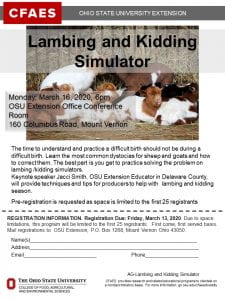Melanie Barkley, Livestock Extension Educator, Penn State Extension (previously published with Penn State Extension: May 31, 2017)
Grazing  management and genetic selection can help your flock minimize the impact of parasites.
management and genetic selection can help your flock minimize the impact of parasites.
Parasites continue to plague many sheep and goat producers throughout the grazing season. Internal parasites decrease growth rates and in high levels can even cause death. However, sheep and goat producers can follow several practices to minimize the impacts to their flock or herd. These practices center on grazing management, but can also include genetic selection principles.
Continue reading Prevent Parasites Through Grazing Management

 Without that snow barrier, species such as alfalfa and timothy — the most susceptible of our non-native forages — are subject to winter injury, which thins stands. This leaves less competition for weeds to establish and flourish.
Without that snow barrier, species such as alfalfa and timothy — the most susceptible of our non-native forages — are subject to winter injury, which thins stands. This leaves less competition for weeds to establish and flourish.
